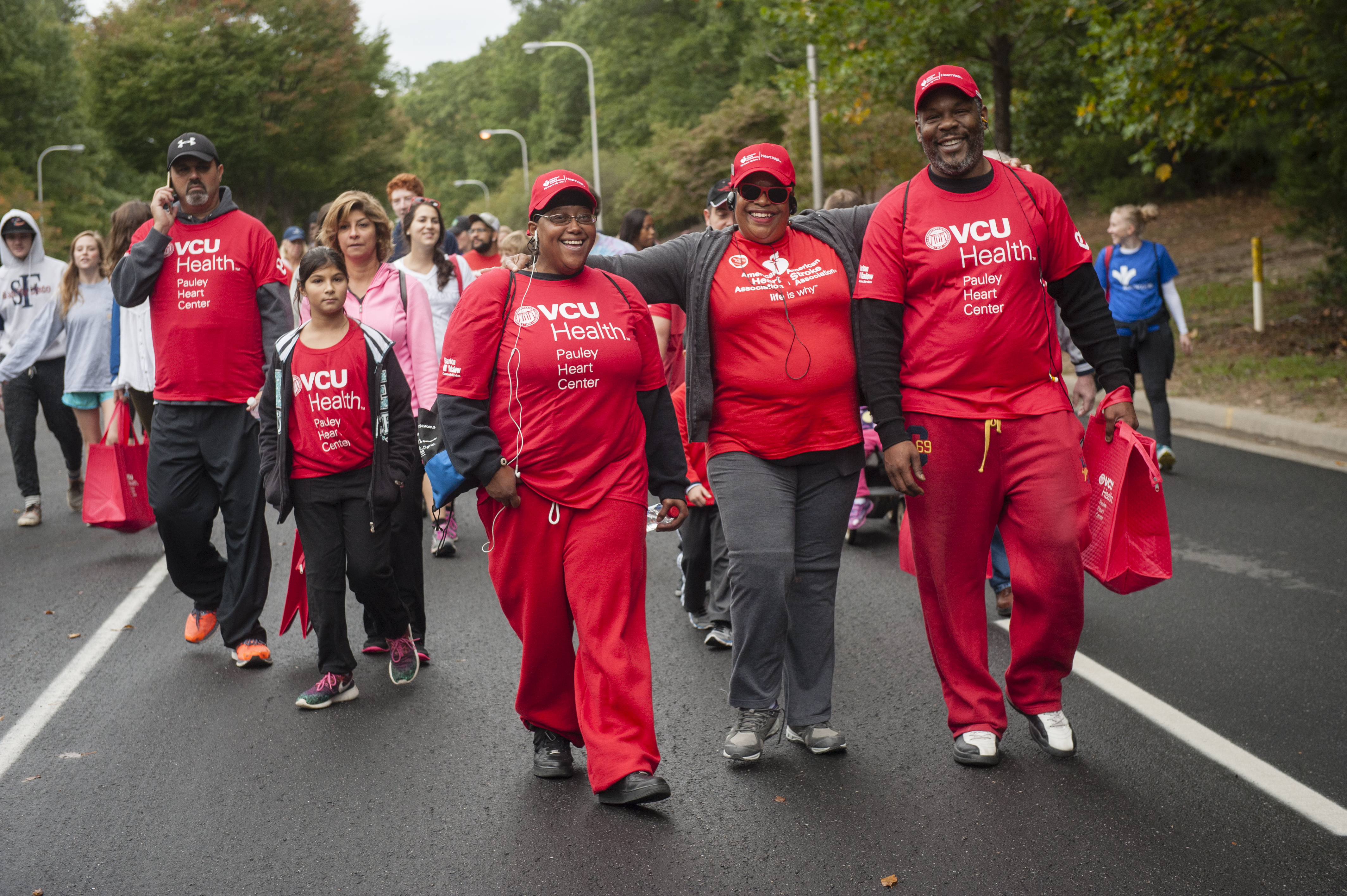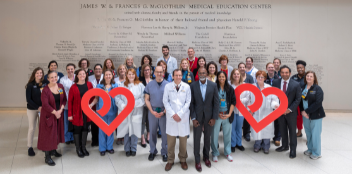AHA, VCU Health celebrate 50 years of partnership
Fifty years ago, a single research grant signaled the aligning missions of VCU Health and the American Heart Association.

Fifty years ago, a single research grant signaled the aligning missions of VCU Health and the American Heart Association. Today, their collective efforts include not only patient-focused care and research, but also community education and outreach initiatives across the commonwealth.
AHA plays a critical role in how we treat cardiovascular disease, said Greg Hundley, M.D., director of Pauley Heart Center.
It does this in several ways.
AHA publishes medical guidelines on cardiovascular and stroke topics. Setting the standards for patient care, these guidelines have a meticulous review and approval process. The organization also creates opportunities for the sharing and dissemination of research through publications and an annual meeting of cardiovascular providers and scientists to network and learn about the discoveries of peer scientists around the world.
AHA also provides competitive research funding for projects in the field of cardiovascular health. In 1971, the Medical College of Virginia received its first grant from AHA to study how to more successfully reinnervate (restore nerve supply to) the cardiac transplant. Since then, the association has funded 282 research projects at VCU Health, totaling $23.5 million.
As Pauley Heart Center’s second-largest source of funding for cardiovascular disease and stroke research next to the federal government, AHA has jump-started the careers of many investigators. Fadi Salloum, Ph.D., associate chair for research in the Department of Internal Medicine and professor in the Division of Cardiology, received the AHA Young Investigator Award in 2005 and AHA’s National Scientist Development Grant in 2010. “I am forever grateful for the opportunities and support that AHA has given me,” he said.
Similarly, an AHA early-career development grant in 2010 gave Antonio Abbate, M.D., Ph.D., critical funding at a pivotal point in his career. “I was conducting studies on blocking Interleukin-1 in heart attacks at Pauley Heart Center,” said Abbate, professor of cardiology in the Department of Internal Medicine. “The grant allowed me to plan and conduct the clinical trials.”
Each fall, AHA-funded researchers discuss their work and its impact on the community at the annual Innovation of the Heart reception co-hosted by Pauley Heart Center and AHA. The 2020 virtual event also introduced participants in the new AHA-funded summer undergraduate research fellowship. The program pairs students with faculty sponsors for 10 weeks, providing them with experience to conduct translational, multidisciplinary cardiovascular research.
In 2019, more than 500 walkers from VCU and VCU Health participated in the annual Heart Walk at VCU’s Monroe Park, raising over $50,000 for AHA and helping to educate the community about preventing cardiovascular disease and stroke. While the Heart Walk is perhaps the most visible example of the VCU Health and AHA partnership, the organizations have also joined forces on community initiatives spanning from CPR training to blood pressure management.
The partnership with VCU Health has enabled AHA to go into schools and underserved communities to teach hands-only CPR. And an initiative between AHA, VCU School of Pharmacy and VCU Health Hub provides blood pressure cuffs and other equipment to help individuals self-monitor their blood pressure from home.VCU Health is also a sponsor of AHA’s Go Red for Women awareness campaign. Heart disease is the No. 1 killer of women, and the campaign makes women aware of their greatest health threat, their risks and what they can do to reduce them. Future projects between VCU Health and AHA will focus on issues that include nutrition insecurity.
“Every year we look at what we’ve been able to accomplish together and dream about what we’ll do in the years to come,” said Michelle Nostheide, executive director of American Heart Association Richmond. “And because we’ve had this long-standing relationship, it allows us to dream a little bit, rather than worrying about funding year to year. We’re able to look out into the future and ask, where do we want to make our impact?”
Back to Spring-2021

